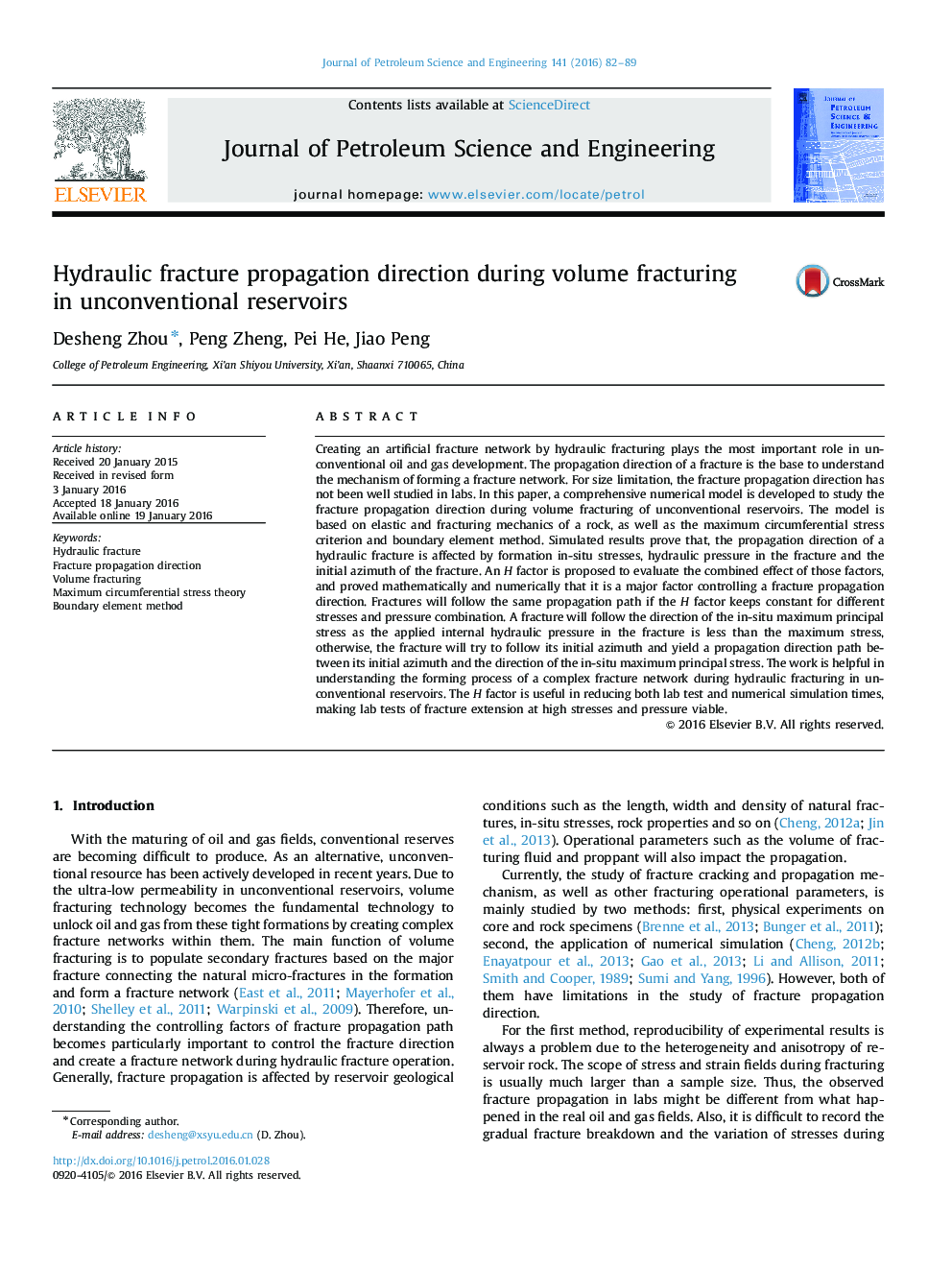| Article ID | Journal | Published Year | Pages | File Type |
|---|---|---|---|---|
| 8126254 | Journal of Petroleum Science and Engineering | 2016 | 8 Pages |
Abstract
Creating an artificial fracture network by hydraulic fracturing plays the most important role in unconventional oil and gas development. The propagation direction of a fracture is the base to understand the mechanism of forming a fracture network. For size limitation, the fracture propagation direction has not been well studied in labs. In this paper, a comprehensive numerical model is developed to study the fracture propagation direction during volume fracturing of unconventional reservoirs. The model is based on elastic and fracturing mechanics of a rock, as well as the maximum circumferential stress criterion and boundary element method. Simulated results prove that, the propagation direction of a hydraulic fracture is affected by formation in-situ stresses, hydraulic pressure in the fracture and the initial azimuth of the fracture. An H factor is proposed to evaluate the combined effect of those factors, and proved mathematically and numerically that it is a major factor controlling a fracture propagation direction. Fractures will follow the same propagation path if the H factor keeps constant for different stresses and pressure combination. A fracture will follow the direction of the in-situ maximum principal stress as the applied internal hydraulic pressure in the fracture is less than the maximum stress, otherwise, the fracture will try to follow its initial azimuth and yield a propagation direction path between its initial azimuth and the direction of the in-situ maximum principal stress. The work is helpful in understanding the forming process of a complex fracture network during hydraulic fracturing in unconventional reservoirs. The H factor is useful in reducing both lab test and numerical simulation times, making lab tests of fracture extension at high stresses and pressure viable.
Related Topics
Physical Sciences and Engineering
Earth and Planetary Sciences
Economic Geology
Authors
Desheng Zhou, Peng Zheng, Pei He, Jiao Peng,
